aquarium & heart piero heliczer & the dead language press
18.11 – 18.12.2022
avec Nora Barbier, Bardo Matrix, Paul Bonnet & François Lancien-Guilberteau, Mia Brion, Kevin Desbouis, Ins & Outs Press, soto labor & nadjim bigou-fathi, Angus Maclise, Mario Montez, Jack Smith, Panama Rose & Émilie Ferrat, Julie Héneault, Sophie Rentien Lando (Espace Ness)
Une proposition de Benjamin Thorel et Sophie Vinet à Bagnoler (Bagnolet)
Exposition réalisée en collaboration avec Les Bains-Douches, avec le soutien des Drac Île-de-France et Normandie – remerciements au Frac Normandie
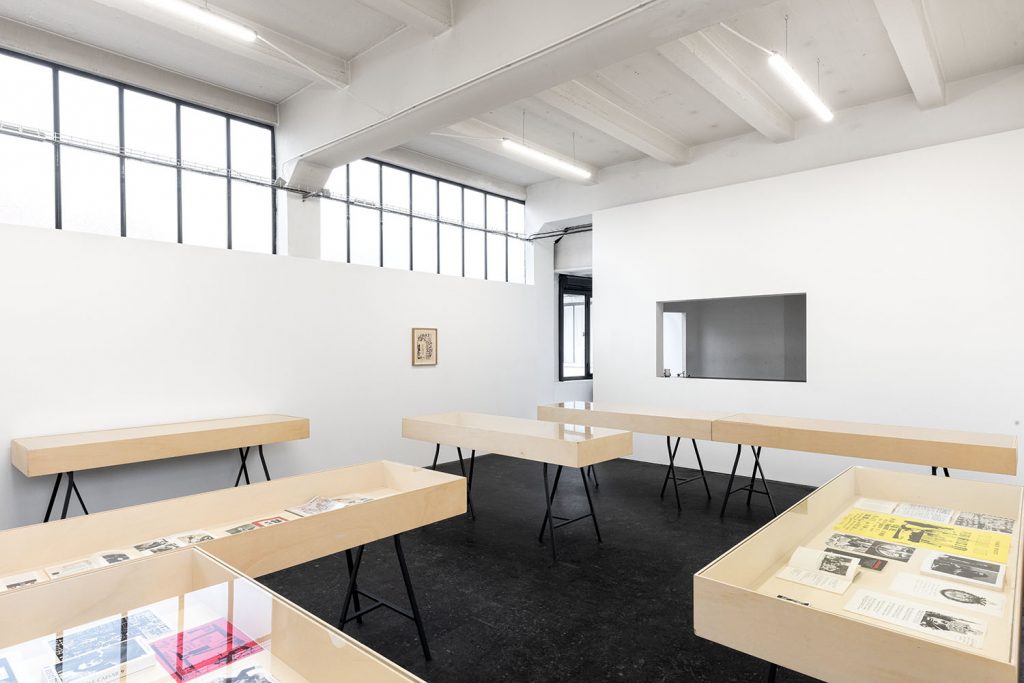
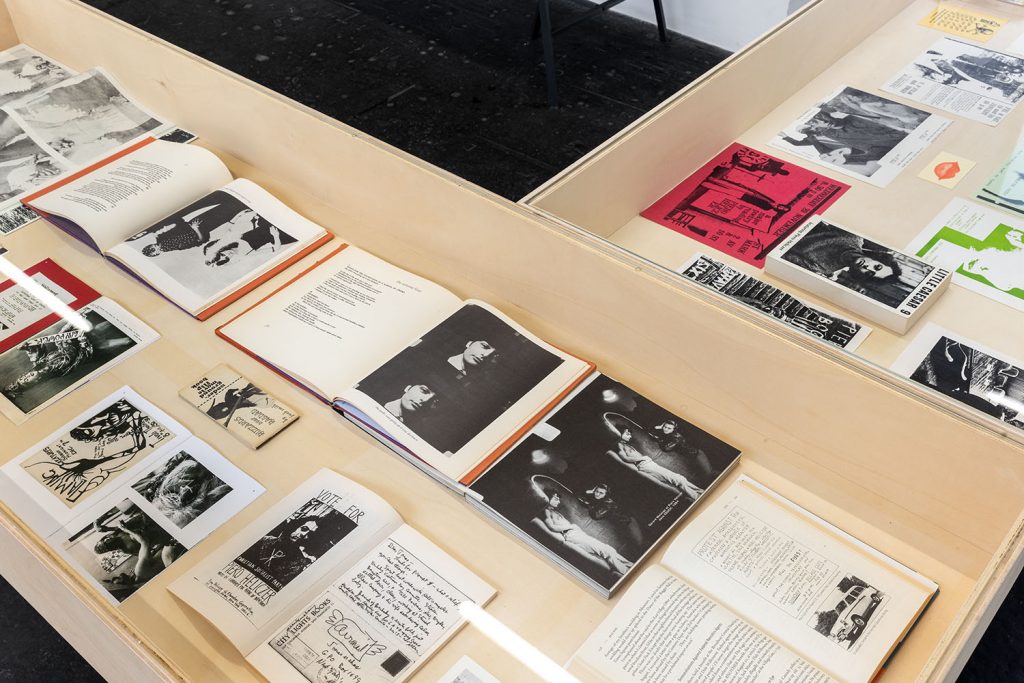
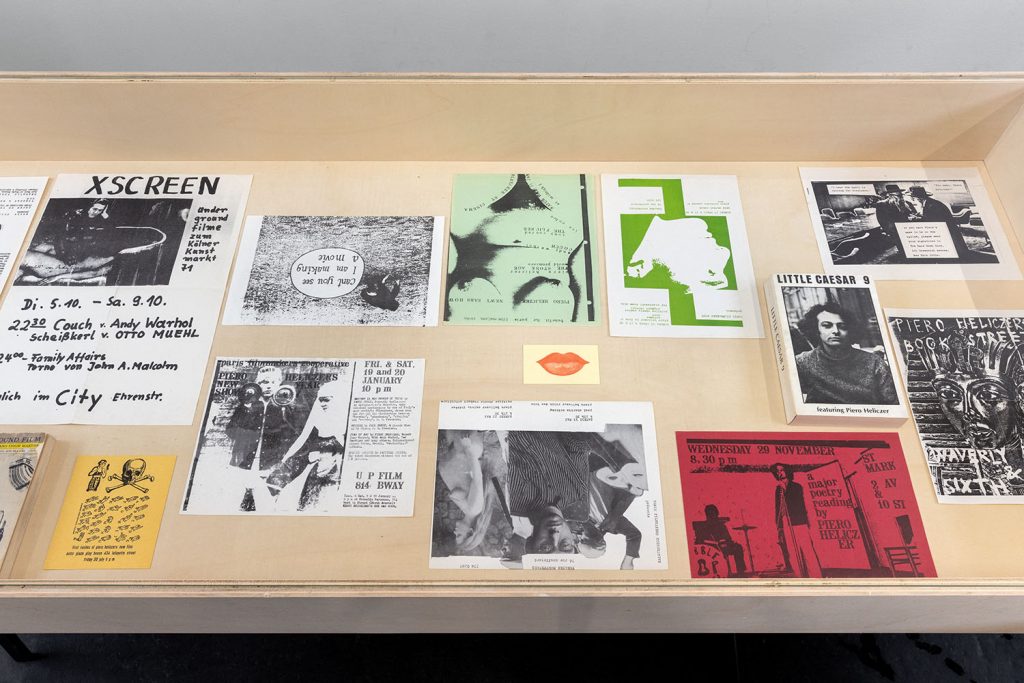

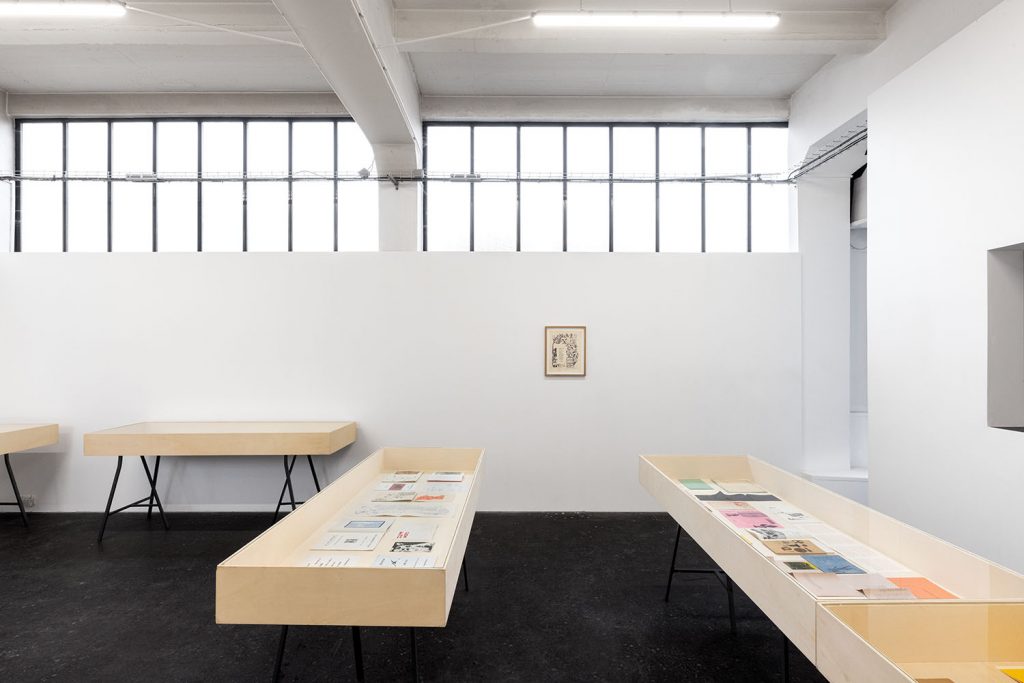
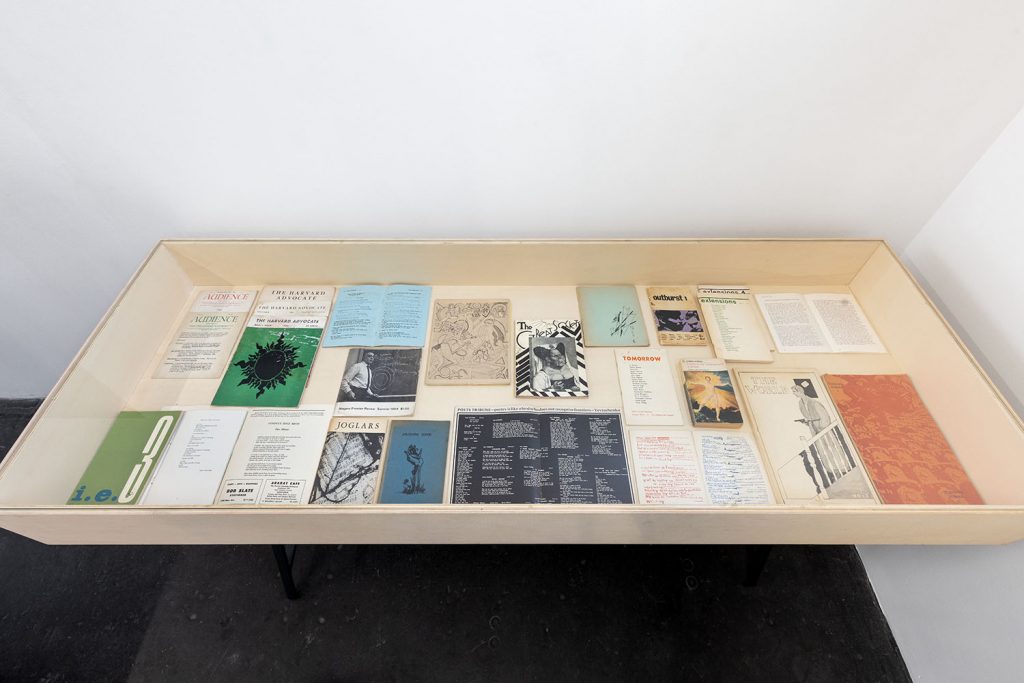
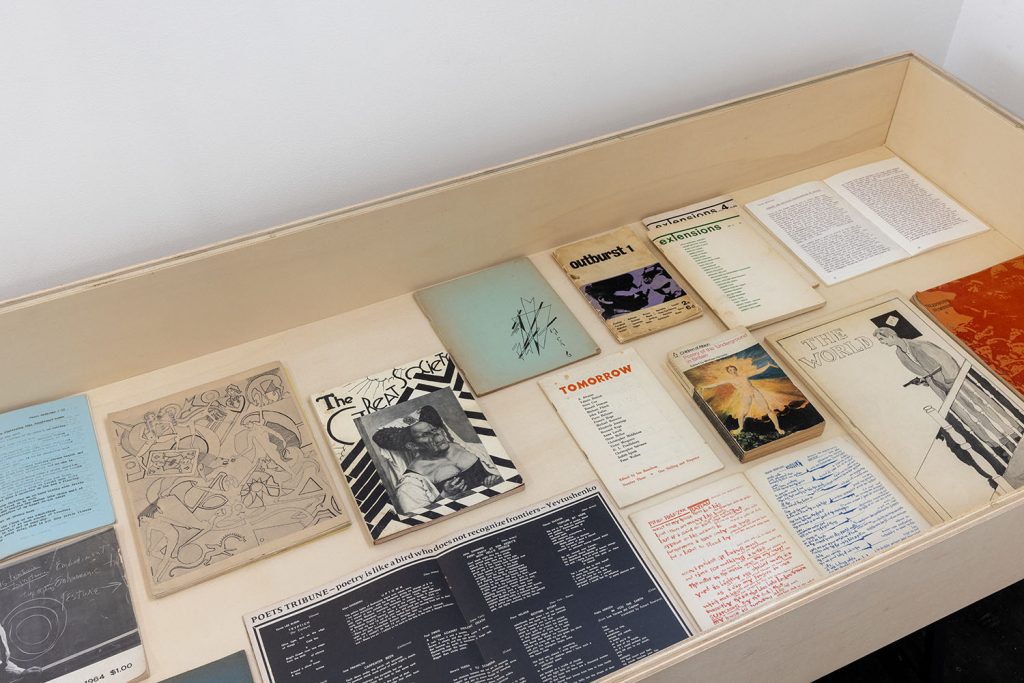

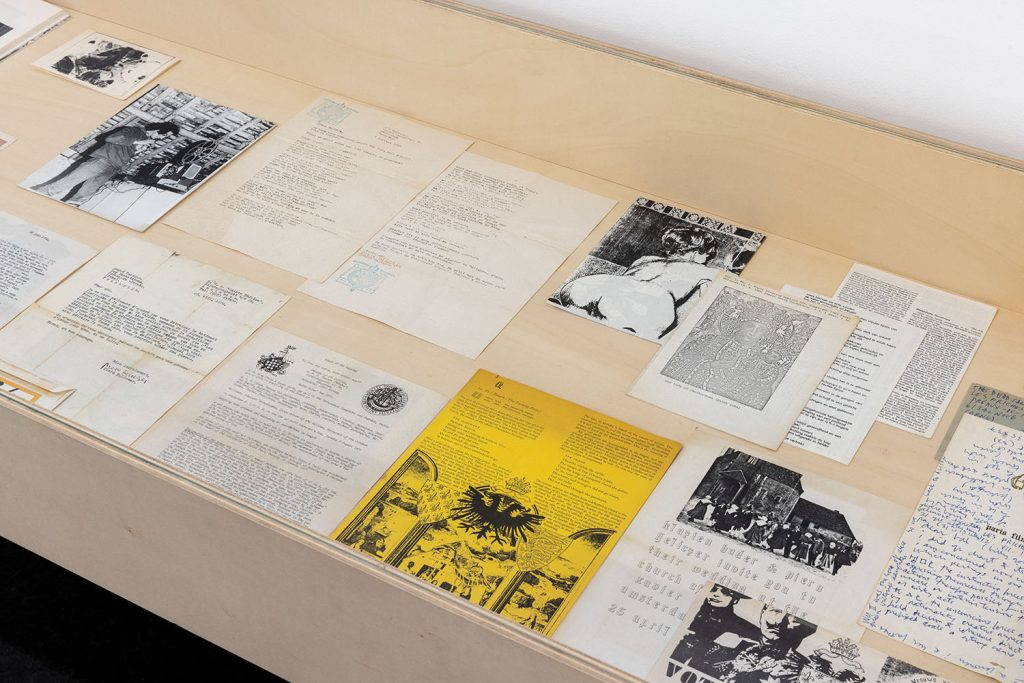
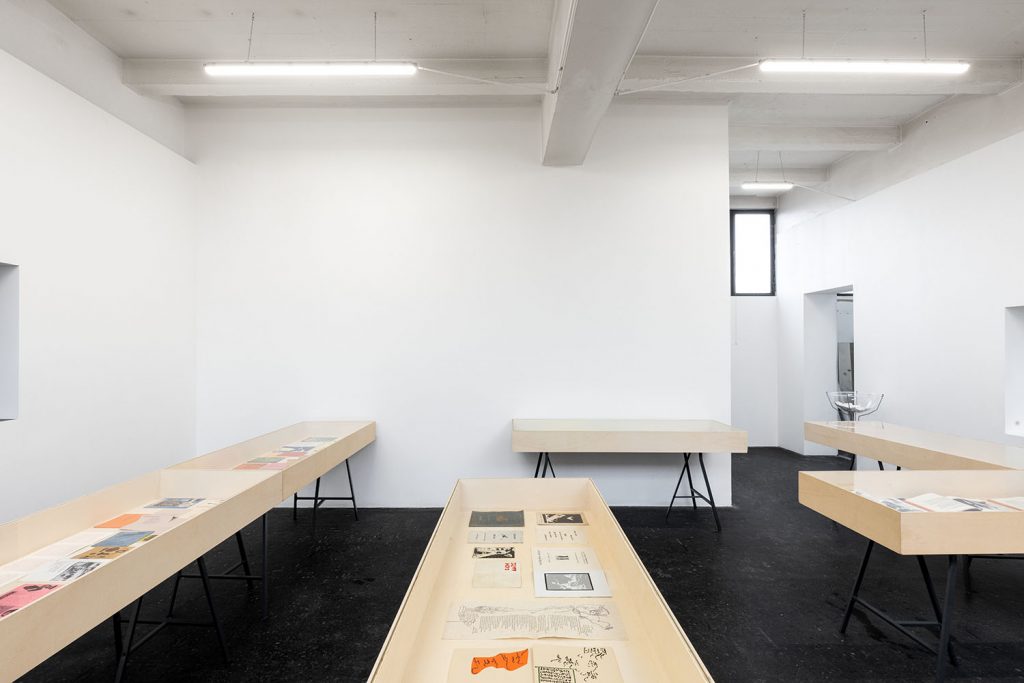
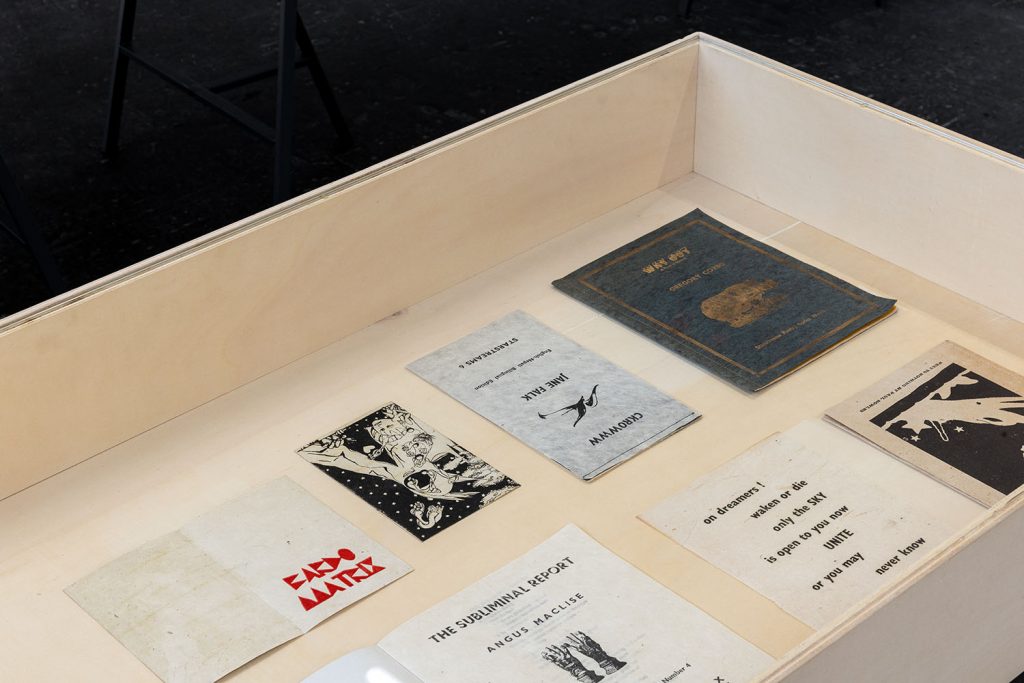
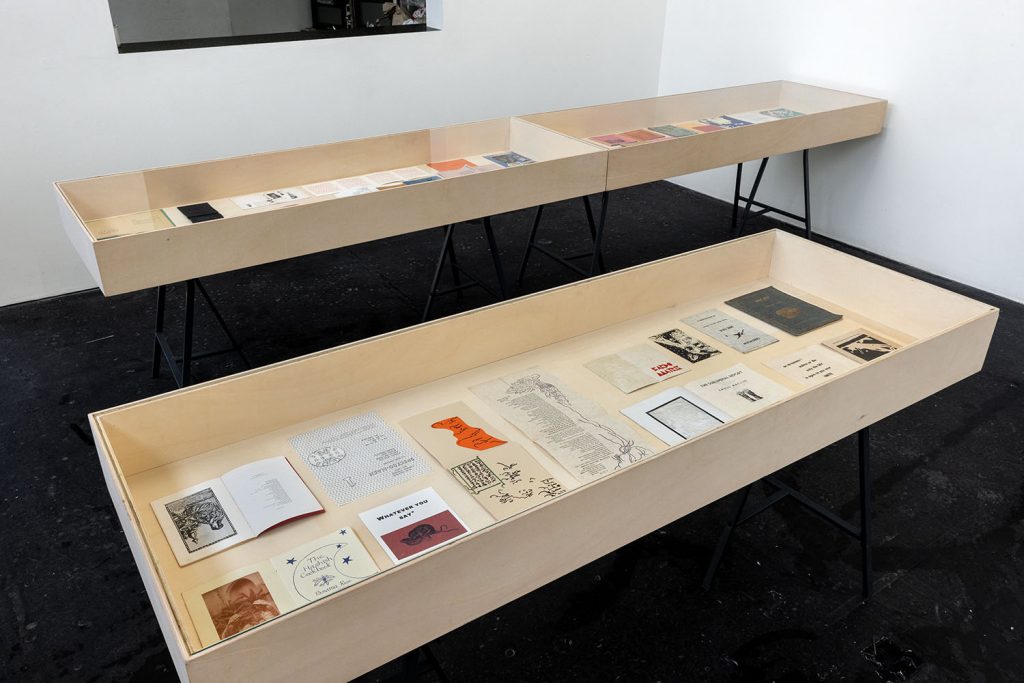
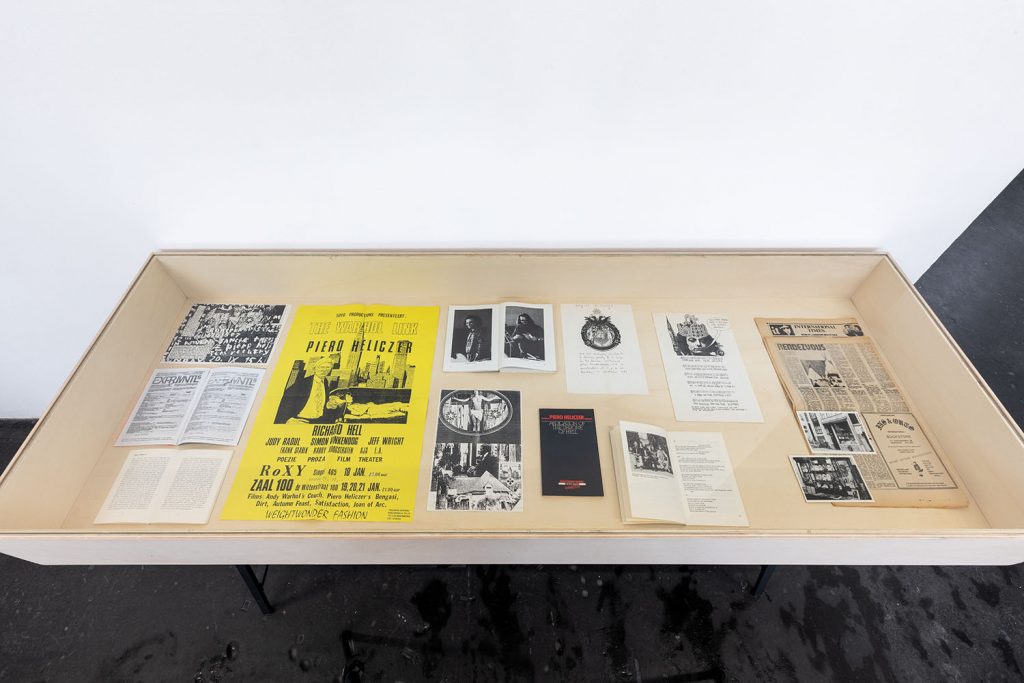

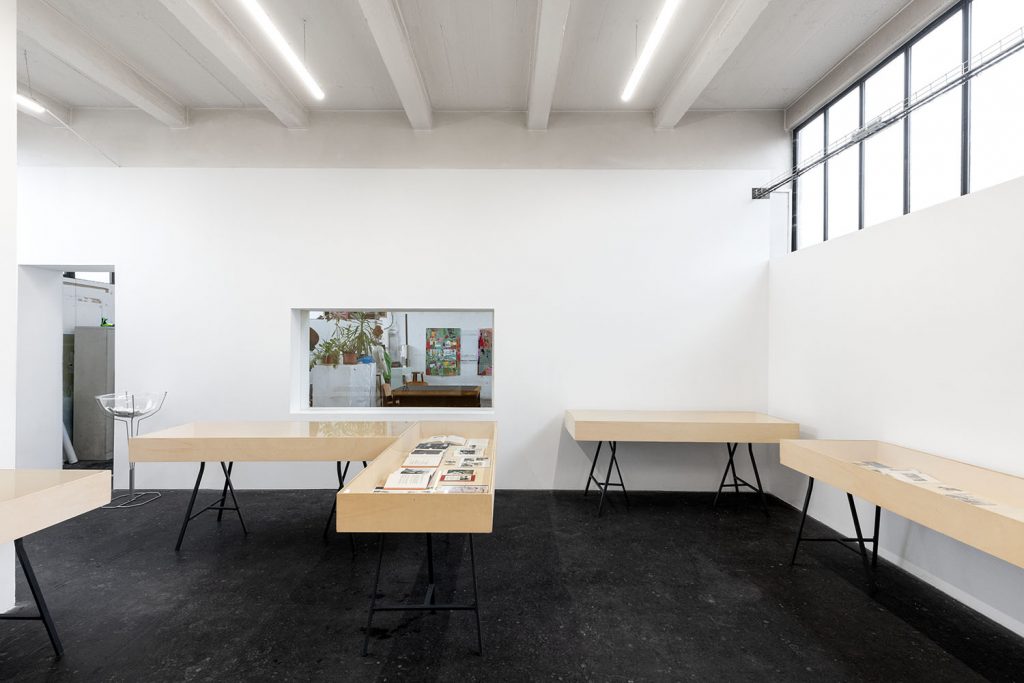

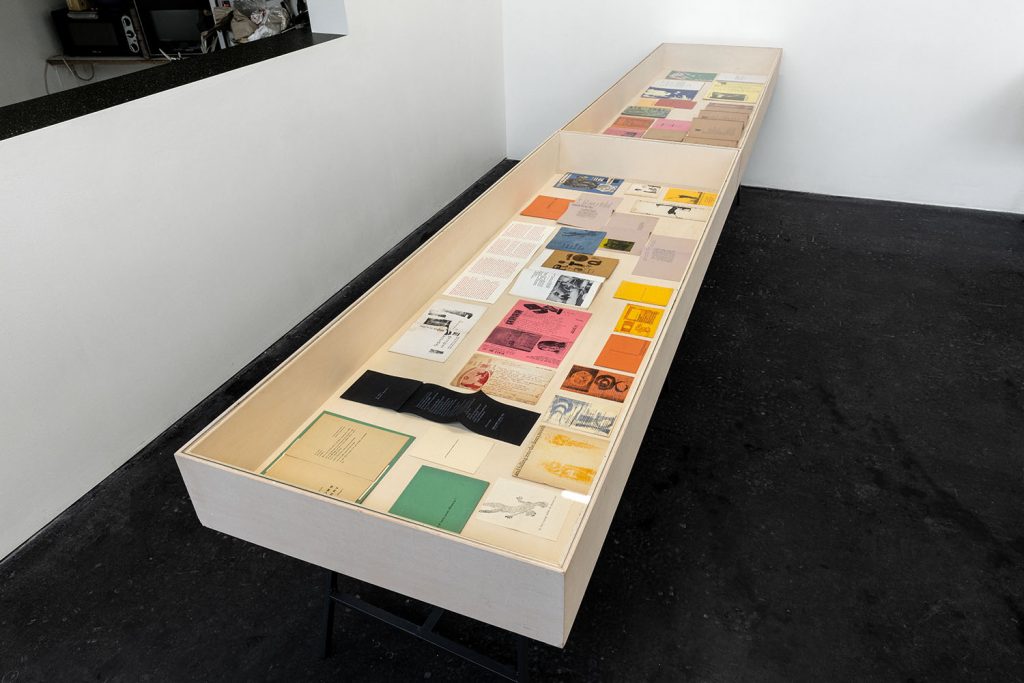

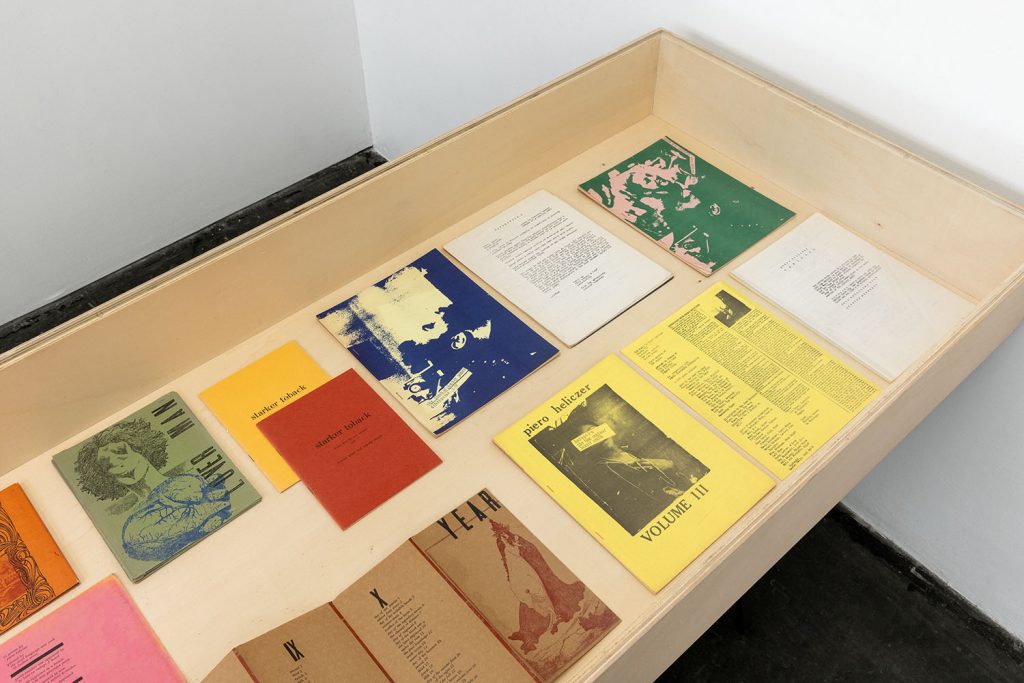
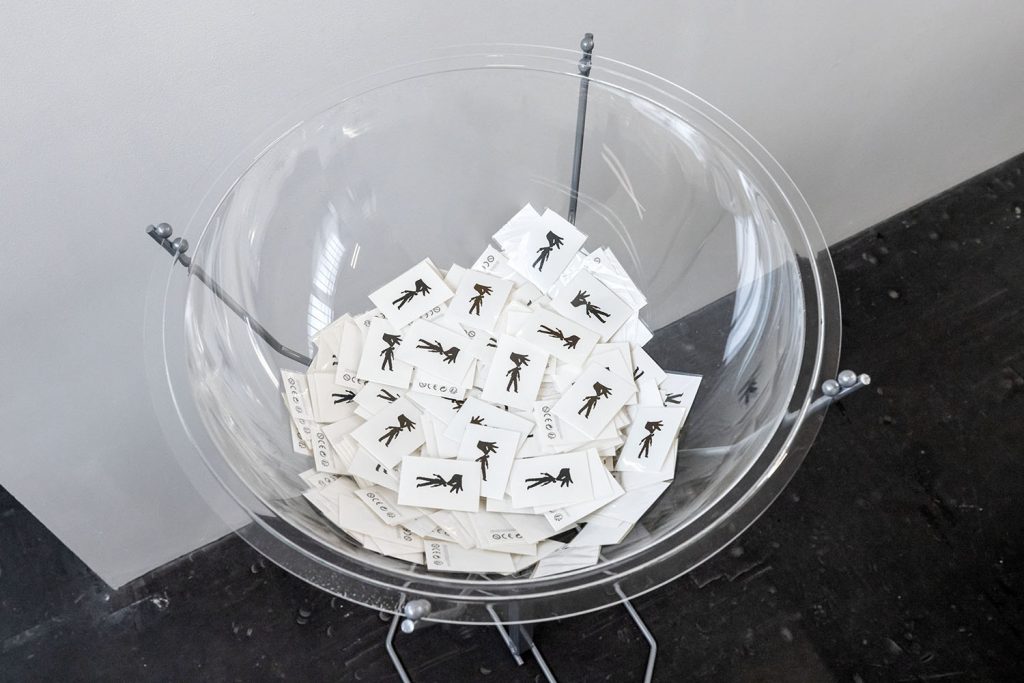
Poète, éditeur, cinéaste, acteur, musicien, figure importante des scènes underground américaine et européenne des années 1960-70, Piero Heliczer est né à Rome en 1937, d’une mère allemande et d’un père polonais, et mort à Préaux-du Perche, dans l’Orne, en 1993. Enfant, il est acteur dans plusieurs films italiens, notamment Bengasi (1942), film de propagande fasciste. En 1944, son père, médecin engagé dans la Résistance, est torturé et tué par la Gestapo. Après guerre, sa mère et lui émigrent aux États-Unis. Il étudie la littérature et la linguistique à Harvard ; il commence à écrire des poèmes et abandonne bientôt l’université pour se consacrer à l’écriture et à une vie nomade. Il s’installe à Paris en 1957 où il fonde avec Angus MacLise – qu’il connaît depuis le lycée – et Olivia de Haulleville, alias Om, une maison d’édition, The Dead Language Press. Ils publient leurs propres poèmes mais réalisent aussi des brochures, livres, cartes avec d’autres auteurs et artistes : Grégory Corso, Anselm Hollo… Ils organisent également des lectures et des performances, et gravitent autour du Beat Hotel à Paris, en compagnie de Sinclair Beiles, William S. Burroughs, Allen Ginsberg, Brion Gysin et Harold Norse.
Au début des années 1960, Piero Heliczer voyage en Angleterre ; il réalise son premier film, Autumn Feast, en collaboration avec le réalisateur Jeff Keen, et se lie avec une scène de poètes, d’artistes et d’éditeurs parmi lesquels Michael Horowitz et Tom Raworth. S’installant ensuite à New York, Heliczer s’implique dans la Film Makers’ Coop : il continue à réaliser des films, parmi lesquels The Soap Opera (1964) et Dirt (1965), et organise des happenings, le plus célèbre étant The Last Rites en 1965. Angus MacLise, Tony Conrad, Marian Zazeela, Ira Cohen, Barbara Rubin ou encore Gerard Malanga sont partie prenante de ses projets : entre poésie, performance, film et musique, ils participent de l’ébullition d’une communauté underground qui a souvent recours à l’imprimé pour rendre publiques ses activités. Il se lie également avec Jonas Mekas, Andy Warhol – dans plusieurs films duquel il apparaît, dont Couch (1964), centré sur le fameux canapé de la Factory – mais aussi Jack Smith dont il publie un livre d’artiste, The Beautiful Book (1962), prélude à la réalisation de Flaming Creatures dans lequel Heliczer apparaît fugitivement. En 1965, Piero Heliczer réalise un film – perdu – avec The Velvet Underground, sur le tournage duquel se rend une équipe de CBS, pour ce qui sera la première apparition du groupe à la télévision.
Voyageant régulièrement entre l’Europe et les États-Unis dans les années 1960, Heliczer s’installe par intermittence dans la région du Perche, qu’il a découverte par l’intermédiaire de l’artiste Hundertwasser. Fondateur de la Paris Film-Makers Cooperative – qu’il décrit en 1971 comme une « organisation à but non lucratif vouée aux idéaux les plus hauts de la création cinématographique, sans discrimination de race, de couleur, de croyance, de sexe, de naissance, de nationalité, ou de compétence artistique » – Heliczer organise des projections de films expérimentaux à Paris, notamment au Centre Américain, Boulevard Raspail, aux Friches, sa maison dans la campagne normande, qui est l’adresse officielle de la Coop, mais aussi en Allemagne, en Autriche, en Italie… Les séances sont souvent accompagnées de lectures de poésie, voire de concerts ou de performances.
Installé à Amsterdam dans les années 1970, Heliczer vit sur une péniche et se rapproche d’un groupe de poètes et d’artistes qui anime une librairie et maison d’édition, Ins and Outs. Toujours lié à la scène de la contre-culture new-yorkaise, il continue de publier des poèmes dans des revues éditées aux États-Unis ; mais la communauté underground se disperse. Angus MacLise et sa femme Hettie partent s’installer à Katmandou, au Népal, où, avec Ira Cohen, ils fondent la maison d’édition Bardo Matrix, qui imprime livres et broadsheets sur du papier de riz fait main. MacLise meurt de dysenterie au Népal en 1979.
Heliczer perd une partie importante de ses œuvres et archives quand sa péniche à Amsterdam est détruite dans un incendie d’origine criminelle. Il passe plusieurs années d’errance difficiles, survivant à New York en vendant des livres dans la rue dans les années 1980, avant de se réinstaller à Préaux-du-Perche au début des années 1990. Il y mène une existence en marge et meurt brutalement en 1993, accroché par un camion alors qu’il circule en mobylette, tirant une petite remorque remplie de livres.
L’œuvre de Heliczer et de son entourage est présente dans l’exposition aquarium & heart par des livres, des revues, des flyers, posters et autres éditions, qu’il a réalisées lui-même pour certaines, pour lui ou pour d’autres. Sans stratégie prédéfinie, mais avec un sens singulier de l’imprimé, Heliczer a utilisé l’édition pour ce qu’elle a de plus intense et de plus imprévisible – la « publication » au sens propre du terme, activité de rendre public et de créer un public au gré des circonstances, quelles qu’elles soient, en croyant farouchement que l’art est plus vivant quand il emprunte les formes les plus intenses, les plus légères, au croisement du mot et de l’acte.
_____
A poet, a publisher, a filmmaker, an actor, and a musician, Piero Heliczer was an important figure in the underground scene that blossomed between the Americas and Europe in the 1960s and ‘70s. Born in Rome in 1937 – his mother had fled Germany and his father Poland – he died in France in 1993, where he was then living, in the small village of Préaux-du-Perche, in Normandy.
As a child, Piero Heliczer stars in several movies in Italy, notably Bengasi (1942), a war propaganda movie for the Fascist regime. In 1944 his father, a doctor who was engaged in the Resistance, is tortured and killed by the Gestapo. After WW II Heliczer emigrates to the US with his mother; a brilliant student, he is admitted to Harvard where he studies literature and linguistics. He starts to write poems and, after a meeting with Gregory Corso, he decides to abandon university to focus on art. A nomadic life ensues: he goes to Paris in 1957 where, with his high school friend, the artist and musician Angus MacLise, and the poetess Olivia de Haulleville, aka Om, he founds a publishing house: the dead language press. Together they print small publications, pamphlets, broadsheets, cards, etc., publishing their own works and those of the likes of Gregory Corso and Anselm Hollo. Heliczer and his friends mingle with the scene that gathers at the Beat Hotel, where Sinclair Beiles, William S. Burroughs, Allen Ginsberg, Brion Gysin, and Harold Norse are then living.
In the early 1960s, Piero Heliczer travels to England, and participates in events organized by poets and publishers such as Michael Horowitz and Tom Raworth, with whom he collaborates regularly over the years. He also makes his first movie, co-directed with Jeff Keen: Autumn Feast (1961). Soon he settles in New York, where his relentless activities participate in the dynamics of the famous underground scene of the time. A Factory regular, he performs in a few of Andy Warhol’s movies, including Couch in 1964. Befriending Jonas Mekas, he makes films such as Soap Opera in 1964, and Dirt in 1965. (That same year he shoots a movie with The Velvet Underground: the reels are today lost, but the project survives thanks to a TV report on the set, for CBS Evening News with Walter Cronkite.) Angus MacLise, Tony Conrad, Marian Zazeela, Ira Cohen, Barbara Rubin, Gerard Malanga collaborate with Piero Heliczer on projects that combine poetry, performance, film, music – such as The Last Rites in 1965. Ephemera and small publications are a preferred medium for this close-knit community, who uses printed matter as a means of expression and a way to make their work public. Still active with the dead language press, Heliczer publishes Wednesday’s Paper with Angus MacLise in 1961, and The Beautiful Book by Jack Smith in 1962, a publication that is a prelude to the making of Smith’s famous Flaming Creatures (1963). (Heliczer briefly appears in the movie.) Making back and forth trips between Europe and the US, Heliczer acts as a “secret agent” of counterculture throughout the 1960s and ‘70s.
In France, Heliczer spends most of his time in Normandy, in the Perche area that he had discovered thanks to artist Hundertwasser. He buys a house, christened “Les Friches” (“The Waste Land”): it is the official address of the Paris Film Makers Cooperative, a structure inspired by Mekas’ Film Maker’s Coop, that Heliczer describes in 1971 as “a nonprofit organization devoted to the highest ideals in creative filmmaking and does not discriminate according to race, color, creed, sex, origin of birth, nationality, or artistic capability.” Shows are organized in Paris, notably at the American Center; at Les Friches; but also in Germany, Italy, New York, etc. Poetry readings and performances such as “Underground Beauty Salons” are organized with the screenings.
Heliczer establishes himself more regularly in Holland in the 1970s; he lives on a boat, the “Sainte Therese”, and gets close to a group of poets and artists running a bookstore and publishing house, Ins and Outs. In parallel Heliczer still collaborates with journals and poetry magazines in the US, Canada, and England; however the underground community slowly dissolves. Angus MacLise and his wife Hettie settle in Kathmandu, Nepal, where, with poet Ira Cohen and a group of American artists, they run a small press, Bardo Matrix, printing poems and books on handmade rice paper and Lokta paper. (MacLise dies from dysentery in Nepal in 1979.) Heliczer loses most of his archive, work, and films when his boat in Amsterdam is set ablaze: difficult years of relentless wandering begin. In the 1980s, he is in New York, homeless, selling books in the streets. Coming back to Amsterdam and then Normandy in the late 1980s, he spends his last years living on the fringe at Les Friches. In 1993, he is hit by a truck as he was driving his Moped, towing a small trailer full of books, on a country road.
*
aquarium & heart gathers work by Piero Heliczer and by his circle of friends: books, magazines, flyers, broadsheets, ephemera, letters, and other printed matter. Several of these publications were made by Heliczer himself, and feature his work as well as that of others. His art, as light in its forms as it is energetic in its dispersal, is all the more lively as it favors the movement of language over the closure of meaning. With no predetermined strategy, but with an original and acute sense of the powers of printing and publishing, Heliczer approached the book as a most intense instrument – one that is able to create a community, and foster a public, whatever the circumstances are.
Following Heliczer’s approach to publishing as a generous gesture of dispersion, aquarium & heart hosts several projects in collaboration with a younger generation of artists. A series of postcard poems by Nora Barbier, Mia Brion, soto labor & nadjim bigou-fathi will be published, in collaboration with Émilie Ferrat, Julie Héneault, Sophie Rentien Lando (espace Ness), as well as ephemera by Kevin Desbouis. Who is it who is coming?, a performance by de Paul Bonnet et François Lancien-Guilberteau, will be presented on the 8th of December; and Jack Smith’s Flaming Creatures will be screened in 16mm on the 14th of December.
Crédits photos : Romain Darnaud
Documentation :
Article :